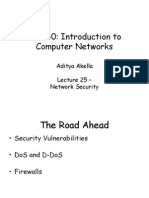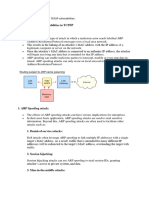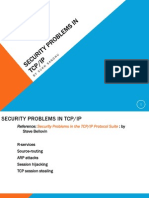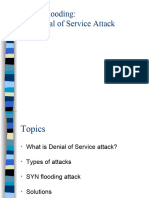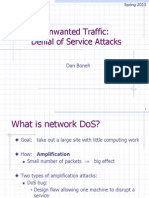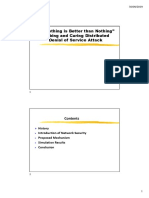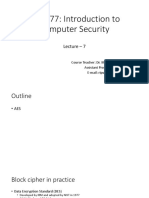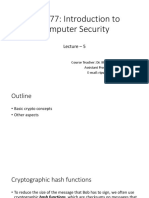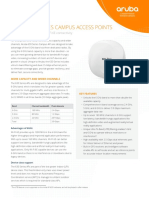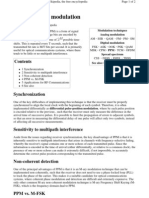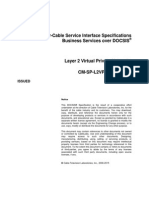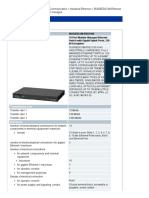0% found this document useful (0 votes)
89 views44 pagesCSE 477: Introduction To Computer Security
This document discusses various types of active network attacks including TCP session hijacking, denial of service (DoS) attacks, and DNS cache poisoning. It describes how TCP session hijacking works, specifically TCP sequence prediction attacks where an attacker guesses the initial sequence number to take control of a session. It also explains how DoS attacks overwhelm servers by using up all available bandwidth and preventing legitimate connections. Countermeasures discussed include using encryption like IPsec to authenticate sessions and prevent hijacking.
Uploaded by
GOLAP HOSSAINCopyright
© © All Rights Reserved
We take content rights seriously. If you suspect this is your content, claim it here.
Available Formats
Download as PDF, TXT or read online on Scribd
0% found this document useful (0 votes)
89 views44 pagesCSE 477: Introduction To Computer Security
This document discusses various types of active network attacks including TCP session hijacking, denial of service (DoS) attacks, and DNS cache poisoning. It describes how TCP session hijacking works, specifically TCP sequence prediction attacks where an attacker guesses the initial sequence number to take control of a session. It also explains how DoS attacks overwhelm servers by using up all available bandwidth and preventing legitimate connections. Countermeasures discussed include using encryption like IPsec to authenticate sessions and prevent hijacking.
Uploaded by
GOLAP HOSSAINCopyright
© © All Rights Reserved
We take content rights seriously. If you suspect this is your content, claim it here.
Available Formats
Download as PDF, TXT or read online on Scribd
/ 44
